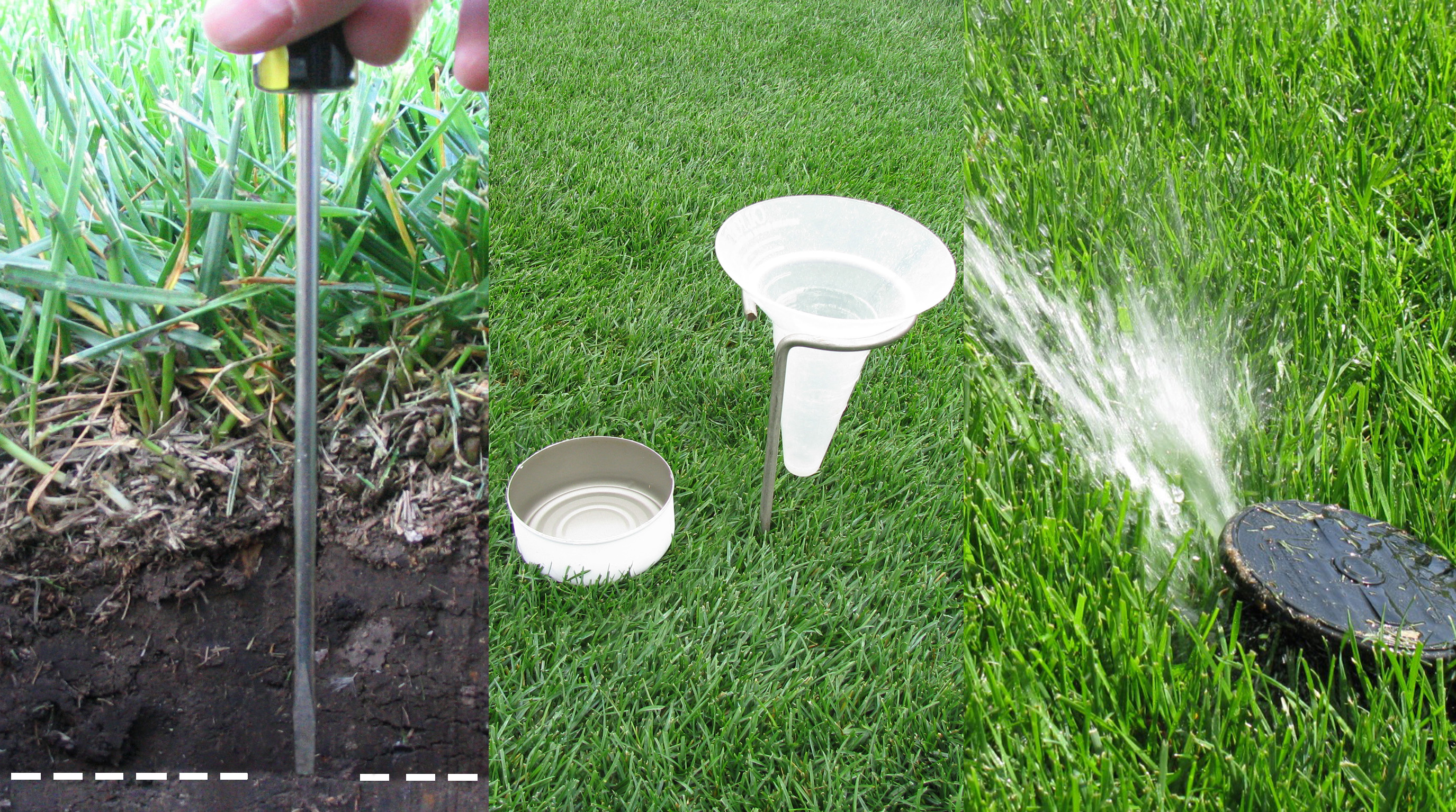
By Sarah Browning, Extension Educator in Lancaster County
When dry, summer conditions occur, applying simple water conservation practices is beneficial for both homeowners and the environment. Instead of running up high water bills or allowing lawns to become dry and discolored, compromise by working with nature.
WATERING TIPS
Water plants deeply, but infrequently, when irrigation is needed. Try to keep soil moist about 1/2 inch deeper than the deepest living roots or, if the root depth is unknown, to 8 or 9 inches into the ground. Woody plants should be watered more deeply, 12–18 inches, and infrequently to promote extensive rooting. During July and August, turfgrasses and ornamental plants require 1–1.5 inches of water per week to remain green and actively growing.
For plants in clay soils when no rain has fallen in the last two weeks, a good watering schedule is two weekly applications to lawn areas, and one deep soaking for woody plants every 10–14 days.
Avoid frequent, light applications of water, such as 10–15 minutes every day. This often results in a shallow layer of continually wet soil, which prevents oxygen movement into the soil. Plant roots need oxygen to survive, and without it they will eventually begin to die.
DETERMINE MOISTURE DEPTH AFTER WATERING
An easy method to figure out how deeply your irrigation water has penetrated the soil is by sticking a long-bladed screwdriver or other metal probe into the ground after irrigation. The probe should move fairly easily through moistened soil but will resist when it encounters dry soil.
Remove the probe from the soil and measure the depth of soil moistened. When pulled out of the ground, the probe should be moist — not dry or soggy wet.
LANDSCAPE MOISTURE MANAGEMENT TIPS
Watering. Monitor the output of your irrigation system by using empty coffee cans, tuna cans or other straight-sided containers to measure the amount of water sprinklers put out and adjust the run time so it delivers the required amount. Change your irrigation system run time seasonally as plant water needs change.
Irrigation Timing. The most efficient time to water lawns and landscapes is in the early morning, from 4–10 a.m. At this time, temperatures are lower and winds calmer than later in the day; less water is lost to evaporation.
Mowing. Conserve moisture by mowing Kentucky bluegrass lawns 2.5–3 inches and tall fescue lawns 3–4 inches in height. Leave grass clippings on the lawn after mowing. Clippings act as a mulch and help hold moisture in the soil.
Dormant Lawn. Consider allowing certain turfs, such as Kentucky bluegrass, to go dormant. When doing this, limit foot traffic and mowing on dormant turf to prevent damage to the grass crowns. Irrigate dormant Kentucky bluegrass with 1/2 inch of water per week, beginning after no rain has fallen for three weeks. This is the necessary amount of water needed to keep dormant Kentucky bluegrass lawns alive.
Note — tall fescue lawns do not go dormant; if entire plants are turning brown, they are dying! Additional water is needed to keep them alive, unless the browning is due to a disease problem. However, tall fescue plants have a much larger root system than Kentucky bluegrass, and can usually draw up all the water needed for plant growth unless we are experiencing moderate to severe drought conditions.
Mulch. Surround garden plants with a 2–3 inch layer of mulch to reduce evaporation and weed competition for available soil moisture.
Catch Rainwater. Use a rain barrel to catch rainwater for use in garden areas. However, don’t let water sit in uncovered containers long enough for mosquitoes to use the standing water for a breeding ground.
Irrigation System Maintenance. Once a month, inspect automatic sprinkler systems. Look for turf growth around the heads blocking flow, broken or damaged heads, clogged nozzles and other complications. Adjust sprinkler heads as plants grow or decorative items such as decks are built and start blocking the spray pattern. Make sure sprinklers don’t waste water by spraying sidewalks or other impervious surfaces, and potentially wash lawn fertilizers and chemicals into storm drains.
TIPS FOR SEPTEMBER
• Group plants with similar water needs — https://go.unl.edu/rightplant.
• Improve soil through aeration — read https://lancaster.unl.edu/hort/aerate.
• Improve soil water holding capacity — read https://lancaster.unl.edu/hort/soils.